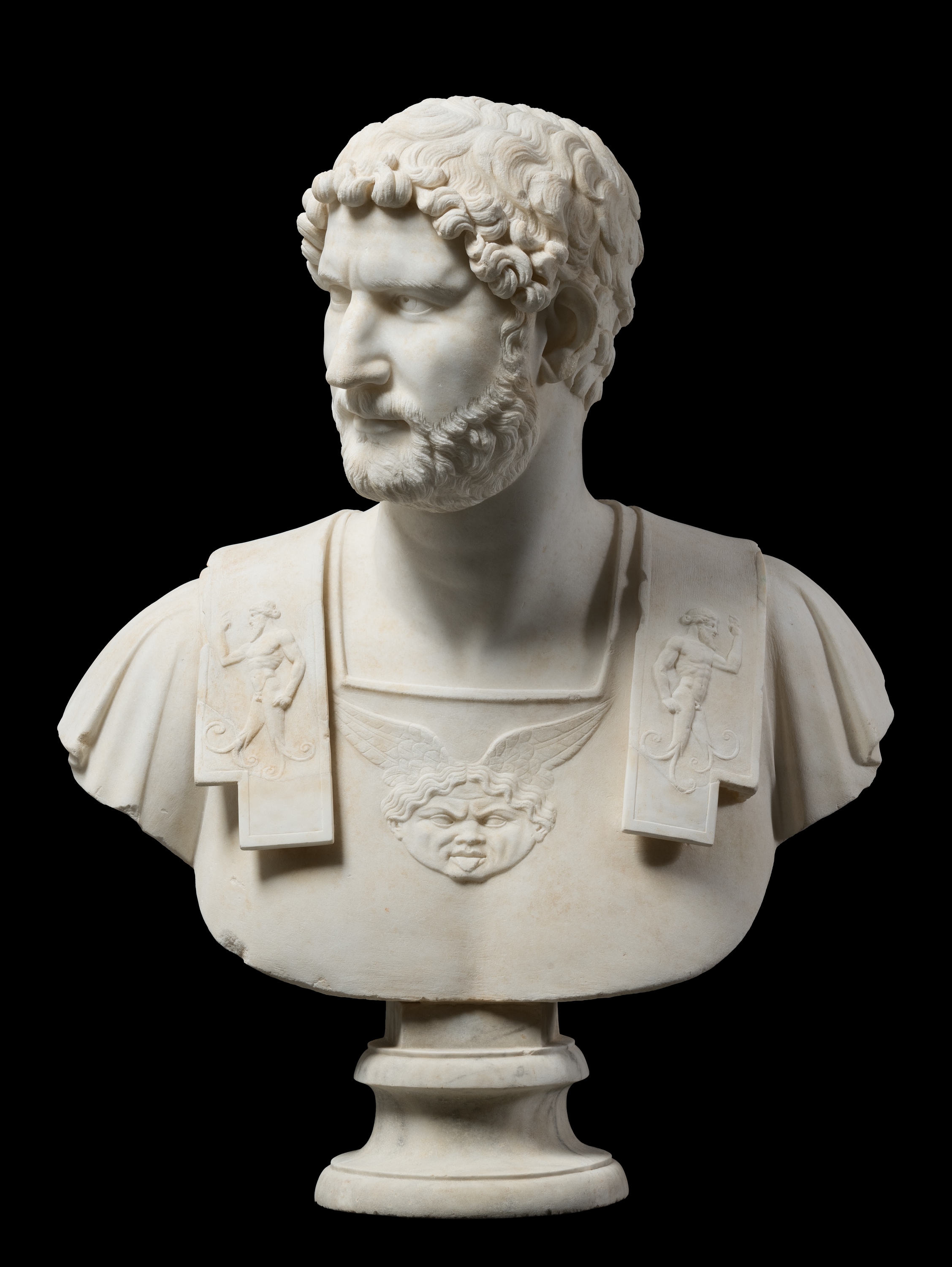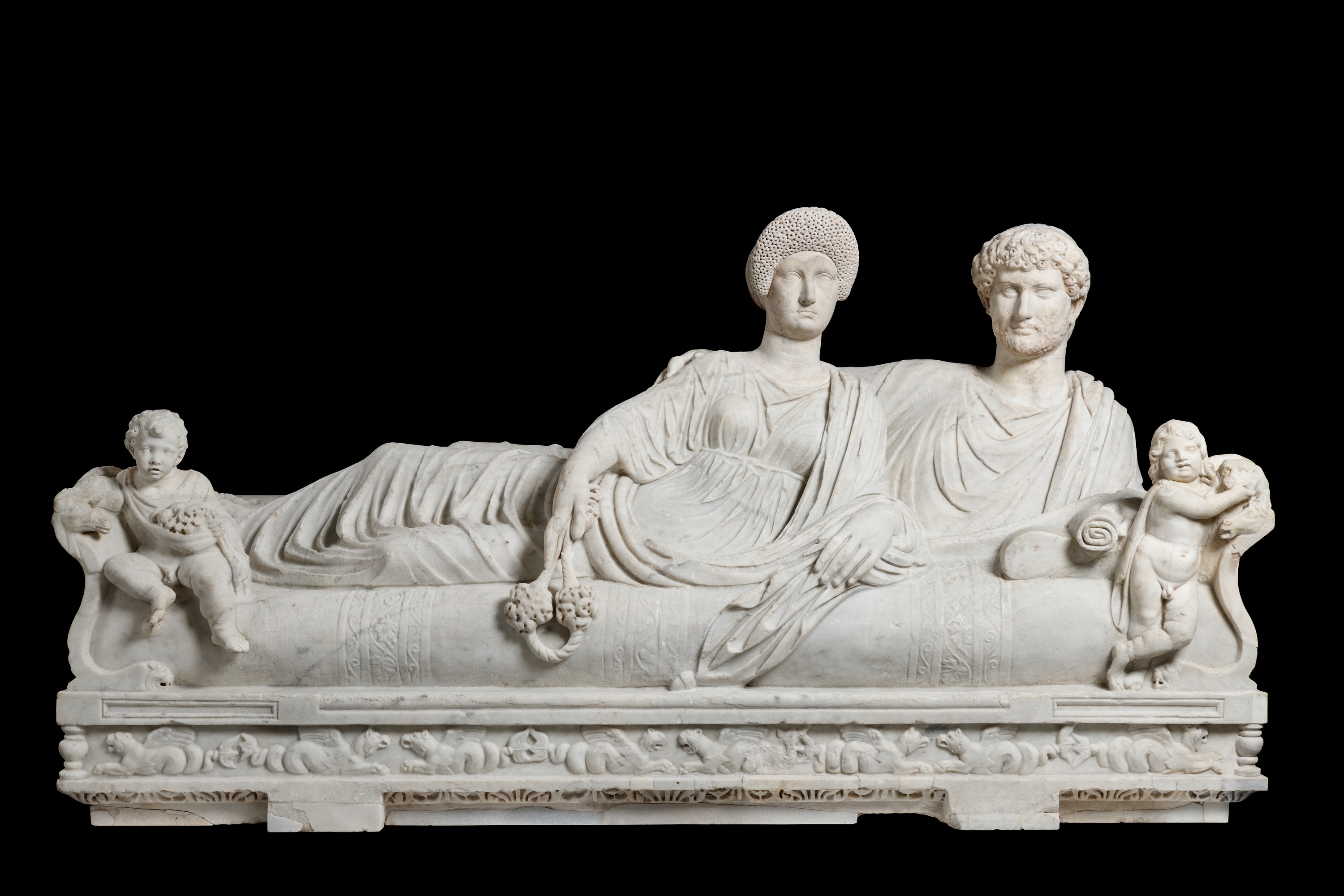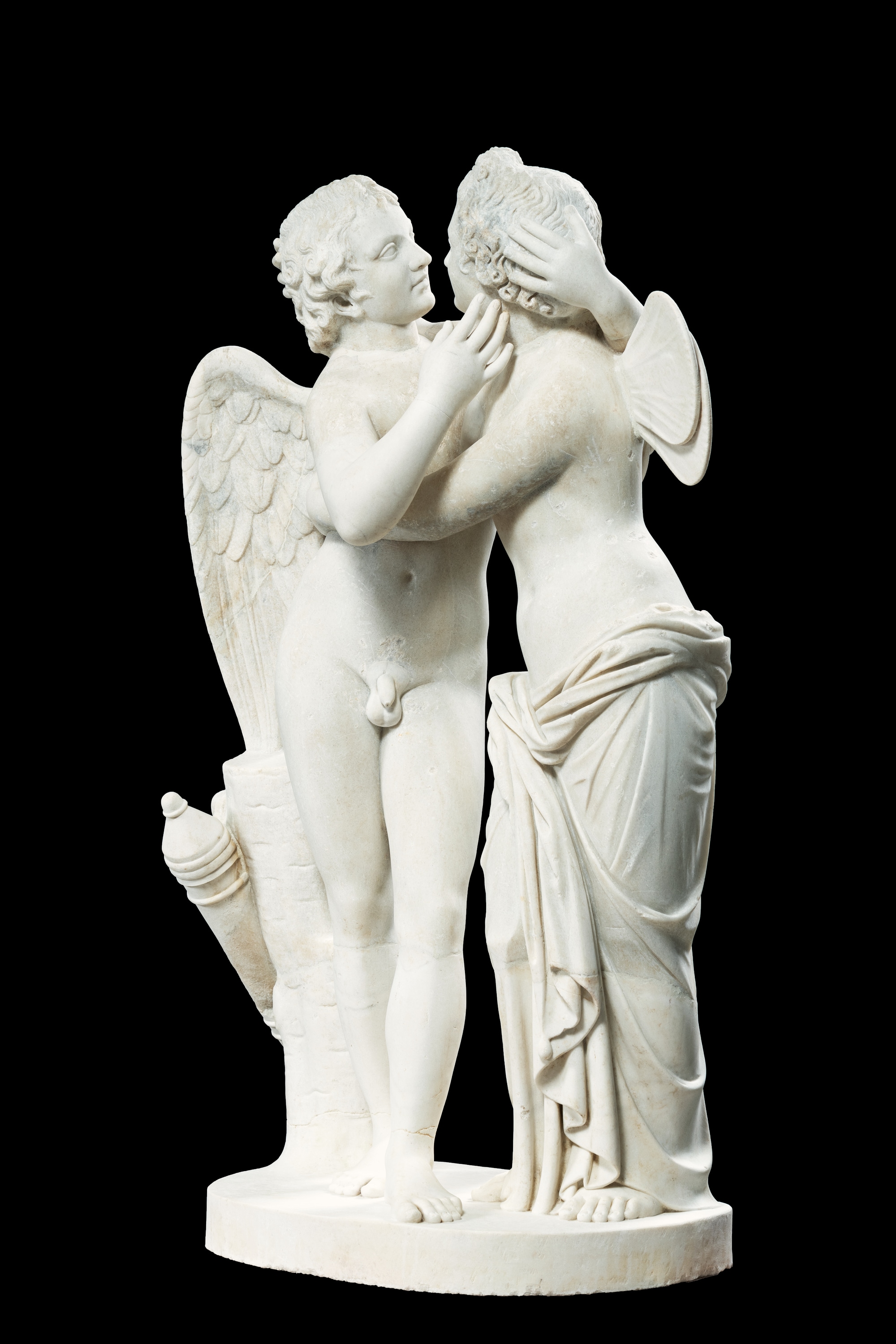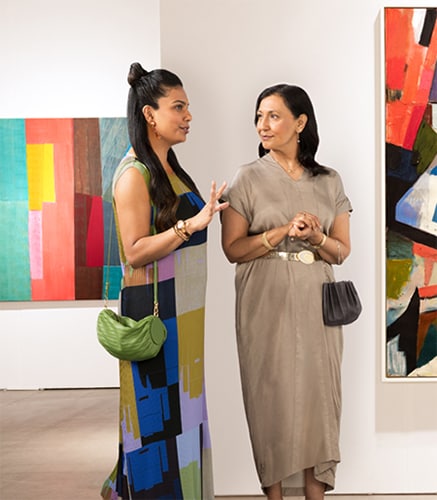A “collection of collections” of ancient Roman sculpture makes its North American debut at The Art Institute of Chicago.
“You might not realize it, but tonight, each and every one of you is part of history,” announced curator Lisa Ayla Çakmak to a buzzing audience of art patrons gathered for her member-exclusive lecture at The Art Institute of Chicago.
The momentous occasion marked the first time that museumgoers would finally gain access to the highly anticipated exhibition of a selection of 58 rarely seen ancient Roman marble sculptures from Italy’s storied Torlonia Collection. The exhibition, Myth and Marble: Ancient Roman Sculpture from the Torlonia Collection, marked the first time these works — which range in date from 5th century BCE to early 4th century CE — have ever traveled outside of Europe. It is also the first time in over 40 years that the Art Institute of Chicago has hosted an exhibition on the topic of Greek or Roman art in its special exhibition galleries.
“That’s nearly as long as I’ve been alive,” mused Çakmak, the Art Institute’s Mary and Michael Jaharis Chair and Curator. She co-curated the exhibition alongside Katharine A. Raff, the Elizabeth McIlvaine Curator. Both are curators of the museum’s Arts of Greece, Rome, and Byzantium department. “Not only am I thrilled to bring the focus back on to the ancient Mediterranean world, but also that this is the exhibition we get to share with our visitors,” adds Çakmak. “It’s such a special occasion that the Art Institute gets to debut the Torlonia Collection to North American audiences and that the Torlonia Foundation was so willing to trust in our curatorial vision to present a group of sculptures that Katharine and I thought would resonate with our visitors.”



A “Collection of Collections”
The Torlonia Collection is widely regarded as one of the most important private collections of ancient art in the world. With 622 masterpieces — from elaborate sarcophagi to towering Roman-Greco statues — the collection rivals the holdings of major European institutions like the Capitoline and Vatican Museums.
The collection was formed in the 19th century by the Torlonias, an Italian princely family from Rome who built a great fortune through banking. Giovanni Torlonia served as banker to both the Vatican and the Bonaparte family — experience that would help him gain noble titles. The family collected antiquities to furnish their many estates in and around Rome and would go on to make several large acquisitions — including the entire inventory of the sculptor Bartolomeo Cavaceppi in 1800, 260 works from the famed Giustiniani family collection in 1825, and the sprawling sculpture-filled palace Villa Albani in 1866.
As one of the largest landowners in Rome in the 19th century, the Torlonias also funded archaeological excavations on their various estates. These explorations resulted in additional discoveries and helped create what is now recognized as the largest and most extensive private holdings of Roman sculpture in the world.
In 1876, Prince Alessandro Torlonia established Museo Torlonia, a private museum in Rome where the sculptures were on display until its closing in the wake of WWII. For generations, the storied collection went unseen by the public — hidden away in storage rooms and known only to scholars and historians by the photographs from a catalogue published in 1884. In 2014, at the behest of his great-grandson (also named Prince Alessandro Torlonia) the Torlonia Foundation was established with the intent to preserve and promote the collection and Villa Albani Torlonia.



In 2020, following an agreement with the Torlonia Foundation and the Italian Ministry of Culture, 92 newly restored works were finally unveiled at the Capitoline Museums in Rome. A later exhibition of the masterpieces at the Louvre was the most-visited exhibition of the year in 2024.1 Following its North American debut at the Art Institute of Chicago (March 15 – June 29, 2025), Myth and Marble will later travel to the Kimbell Art Museum in Fort Worth (September 14, 2025 – January 25, 2026) and the Montreal Museum of Fine Arts (March 14 – July 19, 2026).
Past Meets Present
Regular visitors of the Art Institute of Chicago may find it surprising that the 2000-year-old collection of ancient Roman marbles would find its exhibition home in the Renzo Piano-designed Modern Wing — a site typically reserved for the museum’s collection of 20th and 21st century art.
Not surprisingly, the placement was an intentional curatorial choice: “Our goal with this exhibition has been to bring the past to the present rather than trying to recreate the past. The placement of the show in the Modern Wing really underscores that idea,” said Çakmak. “We want to help our visitors understand that both today and in the ancient Roman world, we live in a visually saturated society, surrounded by images. By placing the show largely in the Modern Wing, we could really lean into the sleek and minimal design vocabulary of Renzo Piano and let the works themselves shine in what feels like a very modern and minimal space.”
The curators also purposefully chose works they felt would resonate with both art enthusiasts and non-specialist visitors of the exhibition. On display are portraits of Roman emperors, whose names are now synonymous with the modern cinematic works they’ve been portrayed in; striking statues of gods and goddesses, including a statue of Athena from late 1st century BCE – early 1st century CE that is based on the Athena Parthenos, one of the most famous statues from ancient Greece; and an impressive statue of a resting goat that was restored by a young Gian Lorenzo Bernini, one of the most famous Italian sculptors of the Baroque period.



Ancient Figures Brought to Life
Nearly half of the 58 sculptures in Myth and Marble have not been seen publicly in over 70 years. Hand-selected by Çakmak and Raff, the works were newly cleaned, conserved and researched just for the exhibition. “I felt like a kid in a candy store,” shares Çakmak of her and Raff’s visits to the Torlonia Laboratories, where most of the sculptures had been stored for more than a century. “After hearing and reading about the Torlonia Collection, to have the privilege of going into the storage rooms and see the collection was just incredible. You can’t fully comprehend what 622 sculptures means in terms of numbers until you see them all crowded together. Then layer on top of that a visit to the Villa Albani Torlonia as well as lands around Rome once owned by the family and you are better able to understand the role that real estate and archaeological excavation played in the formation and growth of their collection.”



One such works that was part of the family’s excavation efforts was discovered at Portus, a coastal city that once served as the main harbor of imperial Rome. There, in 1864, archaeologists uncovered a large carved relief depicting a lively scene of ships, people and symbolic images. “The dizzying array of worldly and divine images in this scene, both real and imagined, can help contemporary viewers imagine the sights and stimuli that ancient people might have experienced when they sailed or stepped into the port,” share the curators in the exhibition catalogue.2
A Lasting Legacy
While Myth and Marble offers visitors a once-in-a-lifetime opportunity to view a rarely-seen prestigious collection of ancient works, the exhibition is also part of the latest chapter of a rich familial legacy — one that is steeped in a reverence for conservation, and evidence of the great care taken by generations of collectors.
“Today, the series of recent exhibitions organized by the Foundation, in partnership with renowned institutions, are part of this collecting enterprise,” writes Torlonia Foundation director Carlotta Loverini Botta in the exhibition’s catalogue. “They exemplify the ‘contemporary act’ of a long-standing principle underpinning the Torlonia Family’s practice of artistic patronage — for through art, people find their destinies to be intertwined, shaping not only what we see but also who we become.”







